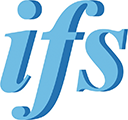
Wire-arc additive manufacturing (WAAM) process has been widely applied for the production of large-scale defense and aerospace components since it combines traditional arc welding for additive manufacturing (AM) aims and the wire material is available in many different grades with defined quality. Furthermore, the WAAM process provides a higher deposition rate resulting in high productivity. Nevertheless, residual stresses and distortion are unavoidably generated in the WAAM components because of the non-uniform temperature field produced by the localized arc energy input. Residual stresses might affect the structural integrity and service life. Additional costs and schedule delay are incurred for straightening distortion. Therefore, it is necessary to accurately predict temperature field, residual stress and distortion at the design stage.
The heat in the layers can be conducted mainly in the monotonical direction in WAAM structures, which is quite different from that in weldments. A larger portion of the former layer might be remelted by the later layer in WAAM components. However, it is still unknown whether the remelting effect has a great influence on the predicted residual stress and distortion in WAAM components. In other words, should the remelting effect be considered in numerical simulation? If yes, how to consider this? The current work will numerically and experimentally clarify the impact of the remelting effect on the temperature field, residual stress, and distortion in WAAM components.
First of all, WAAM experiments will be performed. During WAAM process, the thermocouples will be arranged to measure thermal cycles. After WAAM process, macro and micrograph will be observed. Furthermore, residual stresses and distortion will be measured. Then, numerical simulation will be carried out to predict the temperature field, residual stress, and distortion. Finally, the influence of the remelting effect on the temperature field, residual stress, and distortion in WAAM components is clarified.